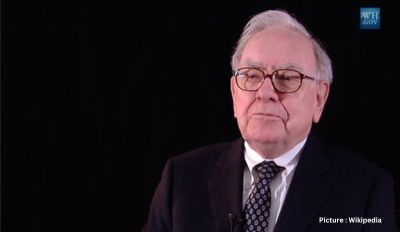Rachael Gambino and Garrett Mazzeo meticulously followed the financial playbook: education, debt reduction, aggressive savings, marriage, homeownership, and starting a family—a quintessential American dream. However, seated at the kitchen table of their suburban Pennsylvania home, a property they both appreciate and feel somewhat ensnared by, they reflect on their journey, expressing reservations about doing it all over again the same way.
The couple, parents to nine-month-old Miles, has a different perspective for their son. Rachael, 33, observes, “I think a lot of Millennials were forced into saying, ‘you need a four-year degree in order to be successful,’” emphasizing the burden of significant student loan debt taken on at a young age. Concerned about this narrative, she adds, “At 18, you’re signing up to be $100,000 in debt before you even really know how to make the best decisions for yourself. I think we need to change that narrative.”
Rachael and Garrett acknowledge their fortune, both maintaining steady employment and temporarily residing with Rachael’s sister, Kristen Gambino, who helps with the mortgage. Despite these advantages, the couple feels precarious, managing their daily lives meticulously through a budget where Garrett, 35, monitors every dollar flowing in and out. Rachael questions, “This is the American Dream. But at what cost? What are we paying for the American Dream now?”
The Vibecession
In post-Covid America, an odd paradox exists: the economy appears robust, yet a pervasive sense of discontent prevails. A recent CNN poll revealed that a staggering 71% of Americans deemed economic conditions “poor,” with 38% describing them as “very poor.” This sentiment has improved marginally since the summer of 2022 when 82% perceived the economy as poor.
Various factors contribute to this economic dissatisfaction, including soaring prices, a challenging housing market, persistent inequality, and escalating debt. While inflation, reaching decades-high levels, is gradually receding, the aftermath is a landscape of elevated prices for essentials and indulgences deferred during the pandemic, such as concert tickets and vacations.
Despite Millennials making significant strides in wealth accumulation over the past four years, they endured over a decade of stagnant wages and relatively flat wealth growth. Brendan Duke, senior director for economic policy at the Center for American Progress, highlights that Millennials are the most educated generation in U.S. history, but this education came at a substantial cost. Between 1987 and 2017, the cost of attending a public four-year college surged by over 200%, leaving the average student debt for those aged 25 to 34 at $32,000.
Generational Wealth Gap
Millennials, now aged 27 to 42, have struggled to match the wealth accumulation of their Baby Boomer parents and Gen X counterparts. Raised during the economic boom of the 1990s, they entered adulthood during the Great Recession, a period that scarred their early professional lives. The recession not only made entry-level jobs scarce but also delayed the retirement plans of older workers, hindering career progression for the younger generation.
By 2016, families led by Millennials born in the 1980s were approximately 34% below their “wealth expectations.” While this gap has diminished, with Millennials now only 11% below these expectations, they face the highest debt burden across demographics, making them particularly susceptible to economic shocks, such as a pandemic.
The Myth of the Nest Egg
The quintessential American Dream often centers around homeownership as the key to wealth building. However, in the Covid-era economy, this dream has transformed into more of a fantasy. Low housing inventory, a lingering effect of the 2007 housing bubble collapse, combined with remote work trends, led to a surge in home prices between 2021 and 2022.
For Rachael and Garrett, who aimed for a 20% down payment to secure a home in 2022, the rapidly rising home prices and interest rates dealt a painful blow. Missing the low-rate window, they find themselves with a monthly mortgage payment consuming 40% of their take-home income. While interest rates are anticipated to decrease, offering a chance to refinance, the couple currently navigates a challenging financial landscape.
Renting, once seen as less favorable than buying, is now a more financially viable option. A report from Attom, a real estate data company, indicates that renting a three-bedroom home is more affordable than owning a similarly sized unit in nearly 90% of local markets in the U.S. Despite this, homeownership remains a priority for many Millennials, ingrained in them as a fundamental part of the American Dream.
Rachael and Garrett, though acknowledging their relative fortune, harbor concerns about potential financial instability. The fear of job loss or unexpected medical bills looms large, and the eventual departure of Rachael’s sister, currently a tenant, adds another layer of uncertainty to their financial planning.
Silver Linings
The economic challenges faced by consumers in the previous year, marked by rapidly rising prices and interest rates, have been taxing. However, some relief is on the horizon. Wages have outpaced prices since 2019, with Millennials experiencing an average wage increase of 14%, adjusted for inflation, between ages 29 and 38.
While this wage growth is a positive development, Brendan Duke notes that it may not fully alleviate the financial strain on workers who have become parents during the same period. The high cost of childcare often offsets wage increases, emphasizing the need for societal investments in areas like parental leave and affordable housing.
For Rachael and Garrett, the reality of childcare costs prompted a reassessment of their family planning timeline. Rachael expresses the desire to have children close in age, but financial constraints dictate a delay of at least four years before expanding their family.
Rachael and Garrett’s story reflects the broader struggles of Millennials as they navigate the complex economic landscape. The American Dream, once a straightforward path to prosperity, now demands a nuanced approach and a critical examination of the traditional narratives surrounding education, homeownership, and financial stability.











